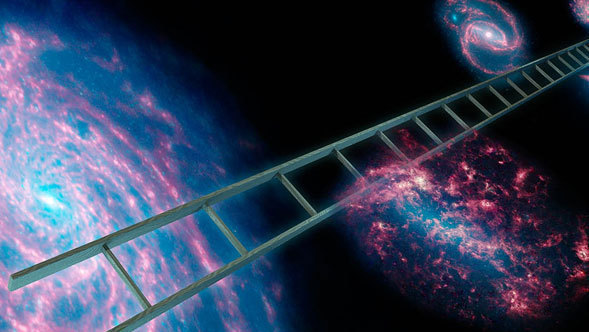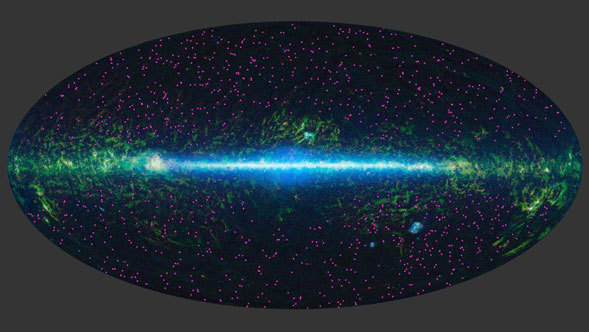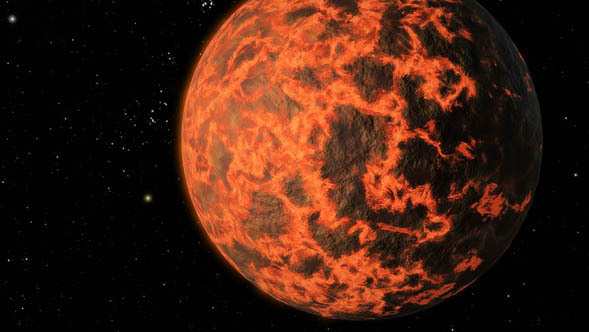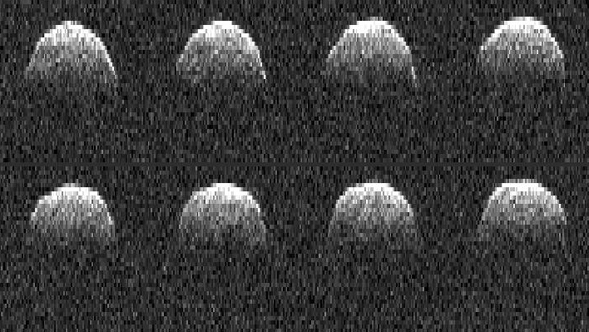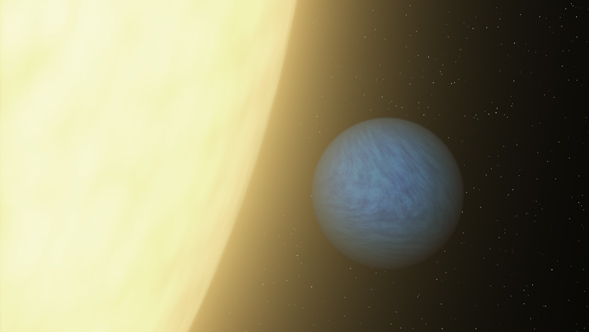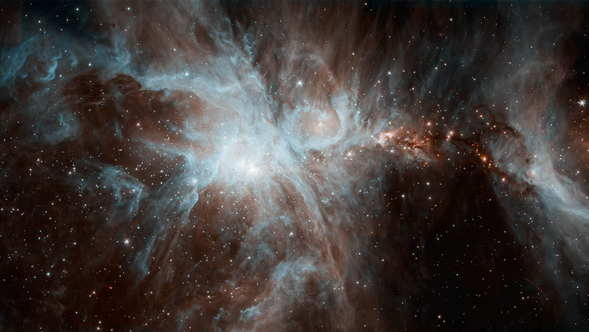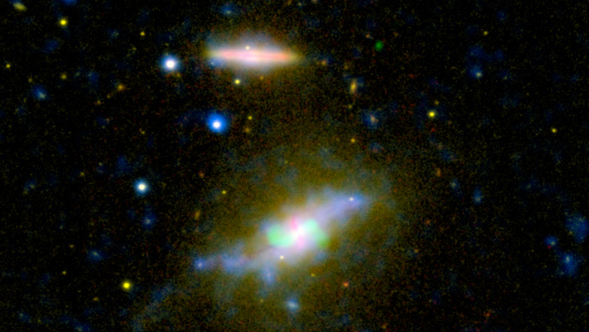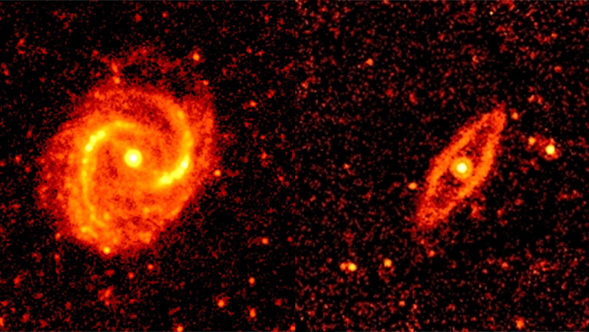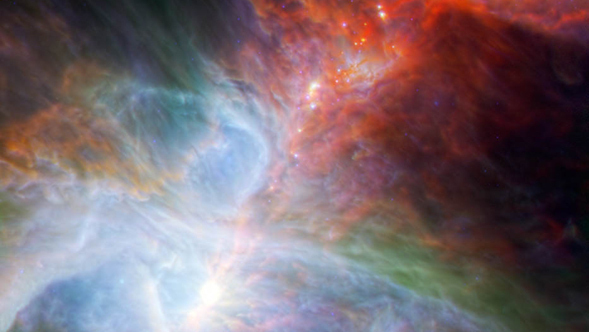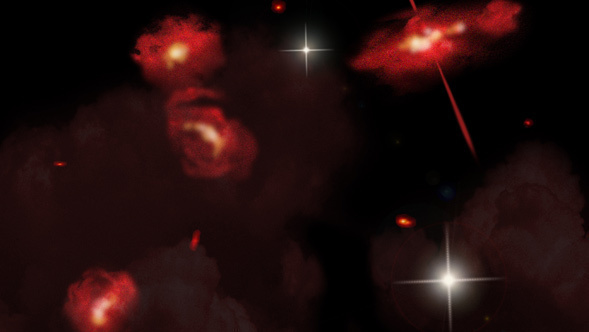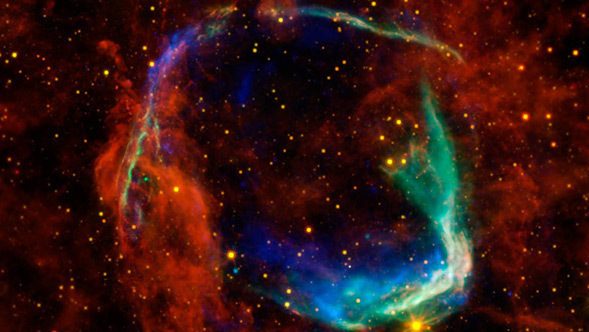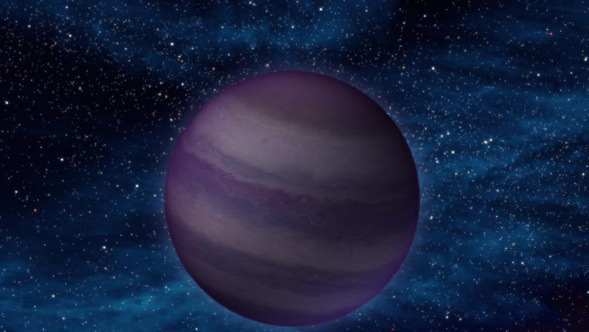Displaying news 211 - 240 of 587 in total
A new study using data from NASA's Spitzer Space Telescope suggests a cause for the mysterious glow of infrared light seen across the entire sky
Astronomers using NASA's Spitzer Space Telescope have announced one of the most precise measurements yet of the Hubble constant, or the rate at which our universe is stretching apart.
NASA's Spitzer and Hubble Space Telescopes have caught sight of luminous quasars igniting after galaxies collide. Quasars are bright, energetic regions around giant, active black holes in galactic centers.
The Space Shuttle Endeavour, mounted atop its specially-adapted 747, made a grand tour of the Los Angles basin on September 21st as part of its final journey. Following its arrival at its permanent home at the California Science Center in Exposition Park, NASA and Spitzer will be participating in a week-long first-viewing event (Oct. 30–Nov. 4) as Endeavour is revealed in its new display space.
With the combined power of NASA's Spitzer and Hubble space telescopes, as well as a cosmic magnification effect, astronomers have spotted what could be the most distant galaxy ever seen. Light from the young galaxy captured by the orbiting observatories first shone when our 13.7-billion-year-old universe was just 500 million years old.
NASA's Wide-Field Infrared Survey Explorer (WISE) has found millions of dusty supermassive black hole candidates spread across the sky, along with thousands of exceptionally bright "Dust-Obscured Galaxies," or DOGs. The Spitzer Space Telescope has followed up on these extreme objects and found that, in addition to hosting actively feeding black holes, the DOGs are feverishly churning out new stars.
Astronomers using NASA's Spitzer Space Telescope have detected what they believe is a planet two-thirds the size of Earth. The exoplanet candidate, called UCF-1.01, is located a mere 33 light-years away, making it possibly the nearest world to our solar system that is smaller than our home planet.
Seeing is believing, except when you don't believe what you see. Astronomers using NASA's Hubble Space Telescope have found a puzzling arc of light behind an extremely massive cluster of galaxies residing 10 billion light-years away. The galactic grouping, discovered by NASA's Spitzer Space Telescope, was observed as it existed when the universe was roughly a quarter of its current age of 13.7 billion years.
Black holes in the early universe needed a few snacks rather than one giant meal to fuel their quasars and help them grow, according to observations from NASA's Spitzer and Hubble space telescopes. Quasars are the brilliant beacons of light that are powered by black holes feasting on captured material, and in the process, heating some of the matter to millions of degrees.
The faint, lumpy glow given off by the very first objects in the universe may have been detected with the best precision yet, using NASA's Spitzer Space Telescope. These faint objects might be wildly massive stars or voracious black holes.
A scientist at NASA's Jet Propulsion Laboratory in Pasadena, Calif., has accurately determined the mass of a nearby asteroid from millions of miles away, the celestial equivalent of "guess your weight".
NASA's Spitzer Space Telescope has detected light emanating from a "super-Earth" planet beyond our solar system for the first time. While the planet is not habitable, the detection is a historic step toward the eventual search for signs of life on other planets.
While some galaxies are rotund and others are slender disks like our spiral Milky Way, new observations from NASA's Spitzer Space Telescope show that the Sombrero galaxy is both.
Harvard-Smithsonian Center for Astrophysics
NASA is extending three missions affiliated with the Jet Propulsion Laboratory in Pasadena, Calif. -- Kepler, the Spitzer Space Telescope and the U.S. portion of the European Space Agency's Planck mission -- as a result of the 2012 Senior Review of Astrophysics Missions.
Supernova explosions and the jets of a monstrous black hole are scattering a galaxy's star-making gas like a cosmic leaf blower, a new study finds. The findings, which relied on ultraviolet observations from NASA's Galaxy Evolution Explorer and a host of other instruments, fill an important gap in the current understanding of galactic evolution.
A newly processed collection of infrared observations of more that 200 galaxies, based on data available from NASA's Spitzer Space Telescope archive, are being released to the science community. Dr. George Bendo of the Jodrell Bank Centre for Astrophysics will highlight the new imagery at the National Astronomy Meeting in Manchester from 27-30 March.
Volunteers are helping astronomers find star-blown bubbles throughout our Milky Way galaxy.
Astronomers have spotted young stars in the Orion nebula changing right before their eyes, thanks to the European Space Agency's Herschel Space Observatory and NASA's Spitzer Space Telescope. The colorful specks -- developing stars strung across this image -- are rapidly heating up and cooling down, speaking to the turbulent, rough-and-tumble process of reaching full stellar adulthood.
Astronomers using data from NASA's Spitzer Space Telescope have, for the first time, discovered buckyballs in a solid form in space. Prior to this discovery, the microscopic carbon spheres had been found only in gas form in the cosmos.
They say there is no place like home. For Caltech's George Helou, the essence of that phrase carries over to the recognition of his accomplishments. This past year, he has received numerous honors from Lebanon, his country of origin, including his election to the Lebanese Academy of Sciences. The tributes bestowed by the Mediterranean nation cite Helou's distinguished career in astronomy in the United States and Europe.
Imagine you are a high school student walking into your science class in September and you learn that your teacher is doing research with NASA and you can actually participate This experience is occurring in schools around the US as more and more teachers become part of the NASA/IPAC Teacher Archive Research Program. 2012 marks the program's 8th year.
The cold dust that builds blazing stars is revealed in new images that combine observations from the Herschel Space Observatory and Spitzer Space Telescope. The new images map the dust in the galaxies known as the Large and Small Magellanic Clouds, two of the closest neighbors to our own Milky Way galaxy.
The stars we see today weren't always as serene as they appear, floating alone in the dark of night. Most stars, likely including our own sun, grew up in cosmic turmoil, as illustrated in this new image from NASA's Spitzer Space Telescope.
A remote, blob-shaped galaxy has been found bursting with stars by NASA's Spitzer and Hubble space telescopes.
In the distant reaches of the universe, almost 13 billion light-years from Earth, a strange species of galaxy lay hidden. Cloaked in dust and dimmed by the intervening distance, even the Hubble Space Telescope couldn't spy it. It took the revealing power of NASA's Spitzer Space Telescope to uncover not one, but four remarkably red galaxies.
Like the Milky Way, Messier 83 is classified as a barred spiral galaxy due to the bar-like pattern of stars that run through its center.
The Tarantula nebula can be seen here in a web of dust and multimillion-degree gas.
A mystery that began nearly 2,000 years ago, when Chinese astronomers witnessed what would turn out to be an exploding star in the sky, has been solved.
Although we all want to think that the people we keep company with are "cool," when it comes to the cosmos, no one has a cooler companion than a star known as WD 0806-661.
Displaying news 211 - 240 of 587 in total

